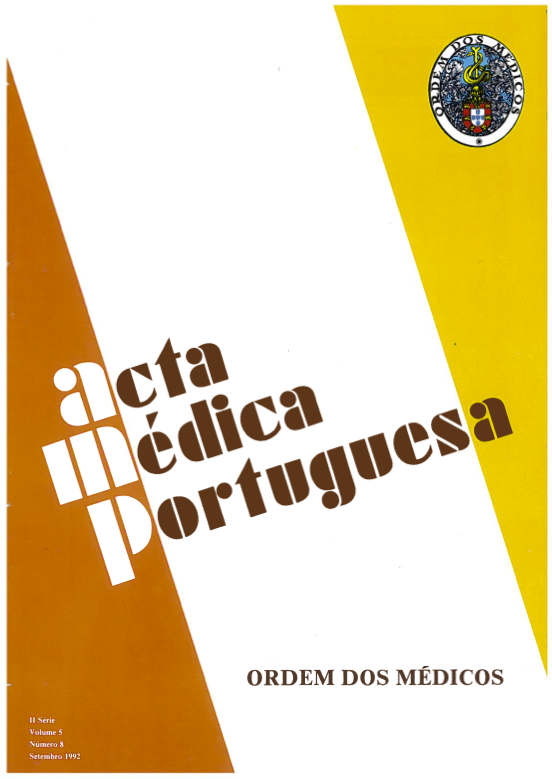Doentes cirúrgicos e politraumatizados numa unidade de cuidados intensivos médica.
DOI:
https://doi.org/10.20344/amp.4148Resumo
to characterize and to assess in terms of severity the surgical and trauma patients admitted to a medical intensive care unit (ICU).retrospective study base on clinical records and the ICU computerized database.the medical ICU of a tertiary hospital.of the 2468 patients admitted to the ICU in 1989, 289 (11.7%) were surgical or trauma ones. The more frequent reasons for admission were: the need for mechanical ventilation, metabolic problems, and depression of consciousness. Of these 289 patients, 48.1% required mechanical ventilation, 14.9 hemodialysis; 4.8% had a pulmonary artery catheter inserted. Mean APACHE II, TISS and MOF scores were high (20.09 +/- 9.29, 24.17 +/- 11.45 and 5.4 +/- 3.59); they were determined in 79.2, 88.2 and 43.9% of patients respectively. Both APACHE and TISS scores were correlated with mortality. When compared with medical patients, surgical/trauma ones although younger (52.9 +/- 20.7 years versus 55.9 +/- 20.2, p = 0.00152), had a longer mean stay in the ICU (7.63 +/- 12.7 days v. 3.64 +/- 7.61, p = 0.0001), and a higher mortality (also in the ICU) (28.7 v. 16.7, p = 0.0005.these are seriously ill patients, who are frequently referred to the ICU in late stages of clinical evolution. We propose they should be closely followed, from the earliest possible stage, by medical-surgical teams, in order to benefit from a multidisciplinary approach.Downloads
Downloads
Como Citar
Edição
Secção
Licença
Todos os artigos publicados na AMP são de acesso aberto e cumprem os requisitos das agências de financiamento ou instituições académicas. Relativamente à utilização por terceiros a AMP rege-se pelos termos da licença Creative Commons ‘Atribuição – Uso Não-Comercial – (CC-BY-NC)’.
É da responsabilidade do autor obter permissão para reproduzir figuras, tabelas, etc., de outras publicações. Após a aceitação de um artigo, os autores serão convidados a preencher uma “Declaração de Responsabilidade Autoral e Partilha de Direitos de Autor “(http://www.actamedicaportuguesa.com/info/AMP-NormasPublicacao.pdf) e a “Declaração de Potenciais Conflitos de Interesse” (http://www.icmje.org/conflicts-of-interest) do ICMJE. Será enviado um e-mail ao autor correspondente, confirmando a receção do manuscrito.
Após a publicação, os autores ficam autorizados a disponibilizar os seus artigos em repositórios das suas instituições de origem, desde que mencionem sempre onde foram publicados e de acordo com a licença Creative Commons









